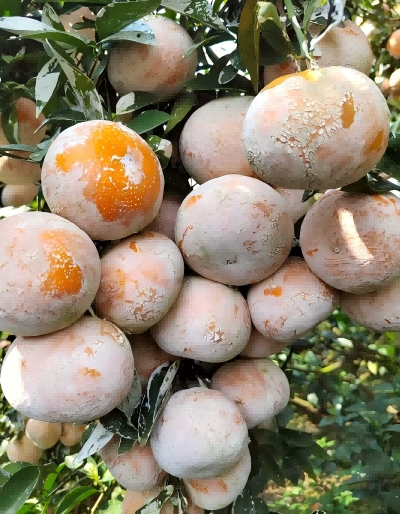Taman tangerines, with their adorable appearance, delicate flesh, and sweet and sour juicy flavor, are a popular fruit for many people. However, sometimes a strange white powder appears on the skin of tangerines. Is it pesticide residue or mold? Is it safe to eat? What exactly is this powder?
What is the white powder on the skin of tangerines?
People often report that the white powder on the skin of tangerines may indicate pesticide residue or mold. The white powder on the skin is calcium carbonate (CaCO3).
Calcium carbonate is a combination of calcium ions and carbonate ions. It is currently used on the surface of citrus fruits, such as oranges, to reflect light and help prevent sunburn and cracking.
Taman tangerines, with their thinner skins, are more susceptible to damage from the sun’s ultraviolet rays, causing the skin and flesh to burn more easily. This can lead to distorted fruit shape, less juice and taste, and sunburn and darkening of the skin.
Therefore, fruit farmers often use calcium carbonate powder during the growing season of mandarin oranges, spraying them on the plants or applying a film on the fruit to protect them from sun damage and maintain a smooth, rosy skin.
After harvesting, farmers clean the mandarins of calcium carbonate powder before shipping them. If consumers find any residual white powder when purchasing, simply rinse it with clean water and they can safely consume it. Besides mandarins, spraying calcium carbonate on the trunks of large fruit trees like persimmons and apples can also prevent them from breaking!


Leave a Reply